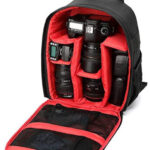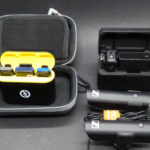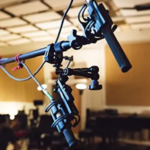At some point in time, in your filmmaking journey, you are going to need a microphone.
The problem lies in the question, which one? Shotgun mic, radio mic, highball or lav? On-camera or off-camera, handheld, on a boom – there are so many choices. So where to start?
Well we decided to ask an expert so got in touch with Sennheiser Australia to ask their thoughts.
Firstly though, let’s work out what microphone type should be used under different circumstances. For example, if you are filming a landscape and simply want ambient noise, that is a totally different microphone that you would use as again say, interviewing a person in a closed room.
Shotgun Mic
Similarly, if you are filming a live band at a music concert, then that is a different circumstance and so a different type of microphone might be used depending on whether you’re indoors or outdoors for example.
Shotgun microphones are ideal for several different things on production set. They are very directional so you simply need to eat point the microphone in the direction sound is coming from and that’s what shotgun microphone will capture. As a result, a shotgun microphone is ideal for capturing dialogue of a scene (as against a person), ambient sound and any Foley effects that may be happening. Shotguns are also commonly the mic used at the end of a boom where you see a sound assistant holding the long pole with the microphone on the end of it and over the top of the subject but out of shot.

Lapel Mic

Video Mic
These are an on-camera microphone with a direct connection into the camera for recording audio to the recording medium whether it be tape or SD card. They are probably the most common microphone in use and if you’re looking at buying a microphone and just want a general-purpose unit this is the way to go.

Handheld Mic

Smartphone Mic
These are a new breed of microphone and designed specifically to be used with a smart phone where the phone is being used as a recording device whether it be an iPhone or Android based. In the basic form they act a little bit like a reporter like that more sophisticated units such as the Sennheiser Memory Mic that we gave an award to last year also have on-board memory, can work wirelessly and even have phone-based software for later editing and syncing.

Which Model?
For a handheld (reporter) microphone, and a choice of two models depending on application was put forward. The HandMic digital can be used with smart phones as it has a USB connection as well is a lightning and micro USB port. For more traditional use the MD 46 is a high-quality dynamic cardioid microphone designed for live reporting and broadcast environments.
For a lav microphone Sennheiser suggests a wireless unit and in this case the model EW 112P G4. This is an all in one wireless system with broadcast quality sound comes with all gear you need including microphone, receiver for mounting on camera, a transmitter for the talent and the cables you will need. It has a range of 100 m which is plenty, and the batteries are said to last for up to 8 hours importantly it is easy to setup and use unlike some others I’ve played with where a degree in sound engineering might be useful.
Budget
Of course, a lot depends on your budget, but never underestimate the quality of your audio. This is one area where going cheap is not really an option. Sennheiser are not in the habit of giving our pricing as they are not a retailer, so we checked around and got the following averages.
- Sennheiser EW 112 GP4 $759.00 approx
- Sennheiser MKE 440 $422.00 approx
- Sennheiser MD 46 $272.00 approx
- Sennheiser HandMic $268.00 approx
- Sennheiser MemoryMic $321.00 approx
For further information, check https://en-au.sennheiser.com/microphones




